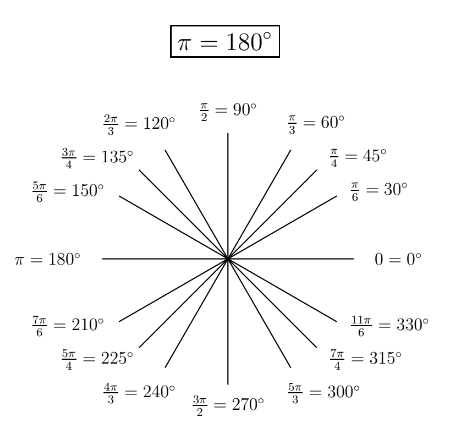Hi everyone! Read through the material below, watch the videos, and send me your questions. Don’t forget to complete the Daily Quiz (below this post) before midnight to be marked present for the day.
Lesson 17: Trigonometric functions
Lesson Date: Tuesday, April 14th.
Topic: This lesson covers Chapter 17: Trigonometric functions.
WeBWorK: There are five WeBWorK assignments on today’s material, due next Tuesday 4/21:
Trigonometry - Unit Circle,Trigonometry - Graphing Amplitude,Trigonometry - Graphing Period,Trigonometry - Graphing Phase Shift, andTrigonometry - Graphing Comprehensive
Today we start trigonometric functions. We’ll begin with a review of the basics of trigonometry — if you remember everything about trigonometry, you can skip this part (but please don’t!). Then we’ll think about how these behave as functions, and look at their graphs.
Lesson NOtes (Notability – pdf):
This .pdf file contains most of the work from the videos in this lesson. It is provided for your reference.
Review of trigonometry
a. Angles
We measure angles using two different systems, degrees and radians. In degrees, a full circle is $360^\circ$. In radians, a full circle is $2\pi \text{rad}$. Thus, we have $360^\circ=2\pi$ radians. If we consider a half-circle (divide both sides by two), we get:
$$180^\circ=\pi$$
Although most people are more familiar with degrees from their day-to-day lives, most mathematics at this level and above use radians. It will help you to get familiar with common angles in radians! The first video gives a review.
Why do mathematicians and scientists prefer radians to degrees? Great question!
VIDEO: Review of angles, radian measure

b. Trigonometric Functions
Definition. To define the trigonometric functions, we consider the following diagram: the initial side of an angle $x$ lies on the positive x-axis, and the terminal side of the angle passes through a point $P(a,b)$.

The distance from the origin $(0,0)$ to the point $P$ is $r$ (note: if we know $a$ and $bg$ we can calculate $r$ by using the Pythagorean Theorem, $r=\sqrt{a^2+b^2}$). Then the trigonometric functions (sine, cosine, tangent, cosecant, secant, cotangent) of $x$ are defined:
$$\sin(x)=\frac{b}{r},\quad \cos(x)=\frac{a}{r},\quad\tan(x)=\frac{a}{b}$$
$$\csc(x)=\frac{r}{b},\quad \sec(x)=\frac{r}{a},\quad\cot(x)=\frac{b}{a}$$
VIDEO: Review – definitions of trigonometric functions
Next, we need to know the values of the trig functions for some common angles. Once again, this is a review of material from previous courses – the following video will take you through some examples, but for more details I recommend checking out the videos on our video resource page.
VIDEO: Values of trig functions at common angles


This is the end of the ‘review’ part of the lesson. Need a little more help? Take a look at the videos on our video resource page.
Graphs of trigonometric functions
Now we turn to the main idea of this lesson. We begin by looking at the graphs of the basic trig functions, $\sin x$, $\cos x$, and $\tan x$.
VIDEO: Graphs of basic trig functions
Example 17.8. Graph the following functions:
$f(x)=\sin (x)+3,\quad g(x)=4 \cdot \sin (x), \quad h(x)=\sin (x+2),\quad i(x)=\sin (3 x)$
$j(x)=2 \cdot \cos (x)+3, \quad k(x)=\cos (2 x-\pi), \quad l(x)=\tan (x+2)+3$
VIDEO: Example 17.8 modifying the graphs of trig functions – amplitude, period, phase shift.
Definition 17.9. Let $f$ be one of the functions:
$f(x)=a \cdot \sin (b \cdot x+c) \quad \text { or } \quad f(x)=a \cdot \cos (b \cdot x+c)$
The number $|a|$ is called the amplitude, the number $\left|\frac{2 \pi}{b}\right|$ is the period, and the number $\frac{-c}{b}$ is called the phase shift.
That’s it for now. Take a look at the WeBWorK, and send me your questions!
-Prof Reitz
Print this page


